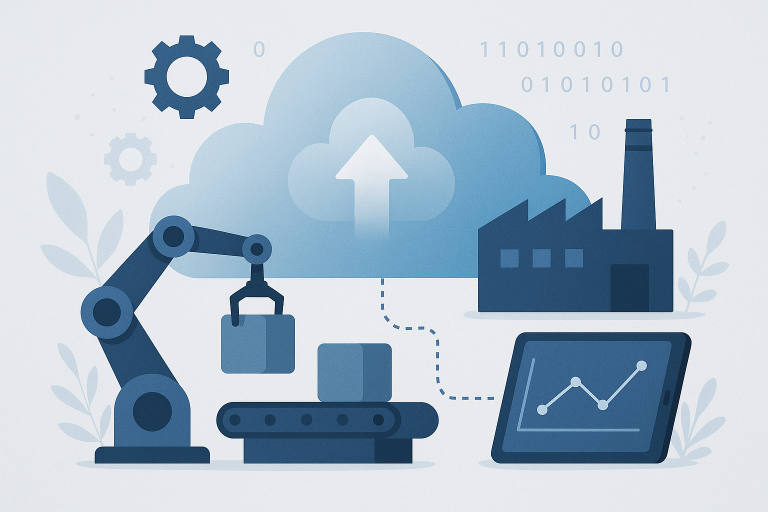
Customer service plays a vital role in the development of many businesses. But, it can be quite challenging for companies to provide customers with exemplary support service. A good quality customer support service is definitely value-adding but having a suitable support service needs resources and time. In today’s world, businesses increasingly turn to automation to streamline their customer service operations. Automation is advantageous in remote support services as it can better tackle everyday customer support needs. In this article, you can explore how customer service automation assist in remote support, including its benefits and potential drawbacks.
What is Customer Service Automation?
Customer service automation refers to using technology to streamline customer support operations. This can include chatbots, self-service portals, and other tools that automate repetitive tasks and free up agents to focus on more complex issues. Automation tools can be used to reduce the workload of support teams while also enhancing the customer experience. By automating simple tasks and helping customers to self-serve, support teams can focus on more challenging problems that require human intervention.
Benefits of customer service automation in remote support
There are several benefits of using automation in remote support:
Grow and streamline your team:
Automation can help businesses grow and streamline their support teams. By automating simple tasks, businesses can consequently reduce the workload of their agents, freeing them up to focus on more complex issues. As a result, this can increase the capacity of support teams, allowing businesses to handle more inquiries without needing to hire additional staff.
Increased efficiency:
By automating repetitive tasks such as password resets and basic troubleshooting, the in-house support team can focus on complicated issues that require human expertise. This will help to minimize resolution times and increase customer satisfaction.
24/7 availability:
Automation tools such as chatbots can provide support around the clock, even outside regular business hours. This can be an advantage for businesses with customers in different time zones.
Consistency:
Automation ensures that every customer interaction can be handled consistently, regardless of which agent handles the case. This can help improve the overall customer experience and build customer trust.
Cost savings:
By automating repetitive tasks, businesses can reduce their hiring and retaining support staff expenses and improve their bottom line.
Know your audience:
Automation tools can help you better understand your customers and their needs. By tracking customer interactions with chatbots, self-service portals, and other automated tools, companies can accumulate valuable insights into customer behavior and preferences. As a result, this information can be used to develop more targeted marketing campaigns, improve product offerings, and deliver a more personalized customer experience.
Future-proof your business:
Automation can help businesses future-proof their customer service operations. As technology continues to evolve, businesses that embrace automation will be better positioned to adapt to emerging trends and innovations. By investing in automation tools today, companies can build a strong foundation for their customer service operations, ensuring they stay ahead of the competition.
Potential drawbacks of customer service automation in remote support
While there are many benefits to using automation in remote support, there are also some potential drawbacks to consider:
Lack of human touch:
Some customers like interacting with a live agent rather than a chatbot or automated system. This can be particularly true for complex issues that require empathy and human understanding.
Limited capabilities:
While automation tools can handle many basic tasks, they may not be able to handle complicated issues that require human expertise. This can result in frustrated customers and longer resolution times.
Integration challenges:
Integrating automation tools with existing customer service systems can be challenging and time-consuming. This can be a road blocker to adoption for some businesses.
How automation can assist in remote support
There are many ways that automation can assist in remote support:
Chatbots:
Chatbots are automated tools to interact with customers via chat or messaging apps. They can handle basic inquiries, such as order status updates and password resets, allowing agents to focus on more complex issues. Chatbots can also be trained to handle more complex inquiries, providing a more personalized customer experience.
Self-service portals:
They allow customers to find answers to their questions and solve basic issues independently. This can reduce the number of inquiries that agents receive, freeing them up to handle more complex issues. Self-service portals can also be beneficial in delivering targeted content to customers, providing a more personalized experience.
AI-powered tools:
AI-powered tools can analyze customer inquiries and provide agents with suggested responses or solutions. It can speed up resolution times and ensure consistency across all customer interactions. AI-powered tools can also recognize trends and patterns in customer inquiries, allowing organizations to proactively address common issues.
Virtual assistants:
Virtual assistants are similar to chatbots but typically designed to handle more complex inquiries. They use natural language processing (NLP) to understand customer inquiries and provide personalized responses. Companies can integrate virtual assistants with self-service portals and chatbots to deliver a seamless customer experience.
Remote access tools:
Remote access tools allow agents to access a customer’s computer or device to troubleshoot issues. This can be particularly useful for complex technical issues that cannot be resolved via chat or phone. Remote access tools allow companies to train customers and troubleshoot their issues directly.
Conclusion
Customer service automation can be a valuable tool for businesses that wish to provide efficient and effective remote support to their customers. By automating repetitive tasks, businesses can improve efficiency and minimize expenditure while still providing a high level of customer service. However, it’s important to balance the benefits of automation with the potential drawbacks. Some customers may prefer speaking to a live agent rather than an automated system, and automation tools may not be able to handle all types of issues. To get the most out of customer service automation in remote support, you need to carefully consider your business needs and goals. It will help you to choose the right tools that best meet your requirements. Your IT consulting services partner can also help to choose the right kind of service automation and help you to provide pivotal services to your customer.







